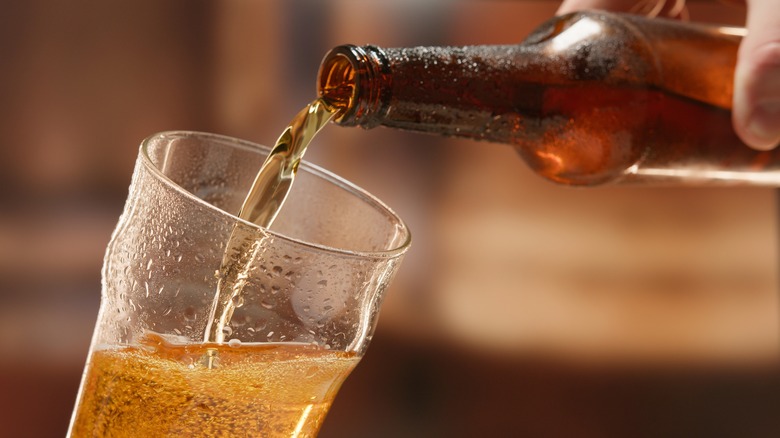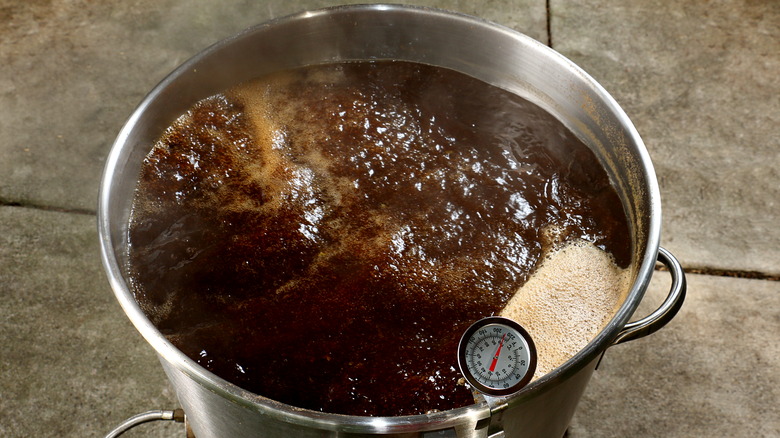The Expert-Approved Spots In Your Home For Brewing Your Own Beer
Beer's taste can vary drastically depending on the variety you choose. From lagers to ales to stouts to porters, different fermenting temperatures and types of yeast can help create the distinctive flavor profiles that beer enthusiasts know and love. Once you find your favorite, it's hard not to seek it out in every bar or grocery store. If your go-to variety is a little pricey or hard to find, however, you might want to consider brewing it at home.
To learn the ropes of home brewing, Mashed spoke with Jeff Tyler, co-owner and head brewer of Spice Trade Brewery + Kitchen, who explained that "temperature and light exposure are the most critical factors" in the process. Allowing your wort (unfermented beer) to ferment in direct sunlight is one of the biggest mistakes you can make when brewing beer.
While Tyler noted that dark, cool spaces like your basement or closet are ideal locations for your fermenter, covering your at-home brewing container with a blanket or towel can also help restrict brightness. Preventing light exposure is imperative due to beer's hops. Inside these small, green, conical flowers are pods containing the oils and natural compounds that give beer its familiar taste and smell. When the compounds in hops are exposed to ultraviolet rays, however, they start to break down, creating a putrid, skunk-like taste.
Brewing your own beer is complicated but worthwhile
Turning your beloved beverage into a hobby is certainly an exciting endeavor, but beer brewing isn't the simplest process to pick up. Beyond acquiring the right ingredients and brewing equipment, learning the steps that lead up to fermentation — like sanitizing your utensils and mashing (steeping the grains in water to extract their sugar) — is essential.
Where your fermentation occurs in your home is significant because your wort typically needs to sit for two to eight weeks, depending on the type of beer you're making. This period is when the yeast converts the sugar into alcohol and carbonation develops. Along with light exposure, Jeff Tyler also noted that temperature is an important factor during this stage of brewing. If the fermenting temperature is too low, you'll be left with a sweeter, less alcoholic beer, but if it's too warm, the yeast will overproduce fuel alcohol, leaving you with a flavor reminiscent of rubber or paint thinner. Ideally, your beer brewing temperature should sit around 66 to 72 degrees Fahrenheit, but this range may change based on the variety you're fermenting.
While this process may sound overwhelming, it just takes a bit of trial and error to get right. Understanding the witchy history of beer brewing might help you channel those 16th-century vibes. Ultimately, though, focusing on the types of beer that are best for new home brewers will help you overcome that learning curve.

